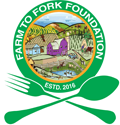Vegetative growth of banana as influenced by deficit irrigation and irrigation interval
DOI:
https://doi.org/10.5455/faa.70723Keywords:
Deficit irrigation, banana, growth parameters, CROPWATAbstract
Water is a limited source with no known substitute. The decrease in pre- cipitations leads to less and less soil water available to crops, hence, proper management of agricultural water is of utmost importance. This study as- sessed the effects of three irrigation levels (IL) and three irrigation intervals (II) on the vegetative growth of East Africa Highland Banana (Musa spp., AAA-EAHB), cv Ng’ombe. The experiment involved a rain-shelter experi- ment comprising a randomized complete block design (RCBD) plots. Three levels of water applications (100%, 90% and 80% of evapotranspiration) at 4, 6 and 8 days as irrigation intervals were applied. FAO-CROPWAT 8.0 model was used to calculate irrigation water requirements based on crop, soil and climate data of the study area. Data collected over a period of 12 months were analyzed and showed that water application could be reduced to 90% of optimal water requirement at 4 days irrigation interval without significantly affecting the important vegetative growth parameters at a level of signifi- cance of α≤0.05. The important vegetative crop parameters considered and their measurements in mid-stage are girth of the stem at the base (70.6±0.9 cm), leaf area (5587.9±84.4 cm2 ) and plant heights (297.3±4.2 cm). Local Climate Estimator software (New_LocClim) was used to provide approxima- tions of climatic conditions because actual data required were not available on the site. Deficit irrigation combined with short irrigation intervals on banana cultivation is a way of saving water without affecting vegetative growth and most probably without any significant reduction of the yield. Reducing irrigation water in banana plantations will save the amount of water used in agriculture especially in areas that receive low precipitations.
Downloads
Downloads
Published
How to Cite
Issue
Section
License
Copyright (c) 2019 by the author(s). This work is licensed under a Creative Commons.

This work is licensed under a Creative Commons Attribution-NonCommercial 4.0 International License.




















